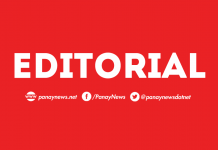
THE AXIOM “measure twice, cut once” is not merely a guideline in the realm of infrastructure development but a fundamental principle that underpins the safety, efficiency, and longevity of public works. The Aganan flyover in Barangay Aganan, Pavia, Iloilo is case study on the importance of accurate initial assessments, specifically soil tests, in the construction of significant infrastructural projects. The Department of Public Works and Highways (DPWH) Region 6’s pursuit of a third soil test, after discrepancies emerged between the first two, underscores a broader lesson – the indispensable value of getting things right from the beginning to avert complications later.
The Aganan flyover, with its P802-million budget and 50-meter span intersection design, is a crucial project to ease traffic congestion in a very busy national highway intersection. Yet, the differing results from soil tests conducted by the United Technology Consolidated Partnership (UTCP) and a confirmatory test by DPWH-6 reveal a troubling uncertainty. Such discrepancies not only cast doubt on the project’s current course but also echo the specter of recent failures, notably the P680-million Ungka flyover’s issues with vertical displacement due to soft soil.
The plan to engage a third-party consultant for an unbiased soil analysis is a prudent step that emphasizes the necessity of thoroughness in the planning stages of infrastructure projects. This approach not only seeks to rectify the immediate discrepancies but also aims to prevent the recurrence of costly errors and ensure that the chosen materials and design are indeed suited to the local terrain.
The Aganan flyover’s predicament illustrates a broader principle that applies to all forms of infrastructure development: the initial stages of planning and assessment are crucial. Accurate soil testing, in particular, is not merely a procedural step but a foundational aspect of ensuring that a structure can stand the test of time and nature. It is about understanding the bedrock of our ambitions, literally and figuratively.
Moreover, this situation highlights the importance of transparency, accountability, and responsiveness among all stakeholders involved in such projects. The delay in the project underscores the need for prompt action in addressing potential issues.
As DPWH-6 seeks additional funds for third-party consultation, the broader lesson for infrastructure authorities and policymakers is clear: invest in meticulous initial assessments to save time, resources, and lives in the long run. This not only involves securing the best expertise available but also fostering a culture of diligence and foresight in project planning and execution.
The Aganan flyover case should serve as a cautionary tale and a learning opportunity. Let this example guide our approach to infrastructure development, ensuring that our ambitions are matched by an unwavering commitment to precision, safety, and sustainability from the ground up.







